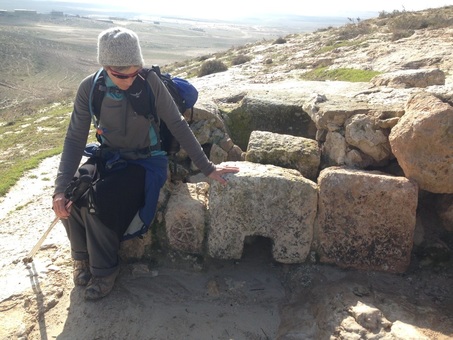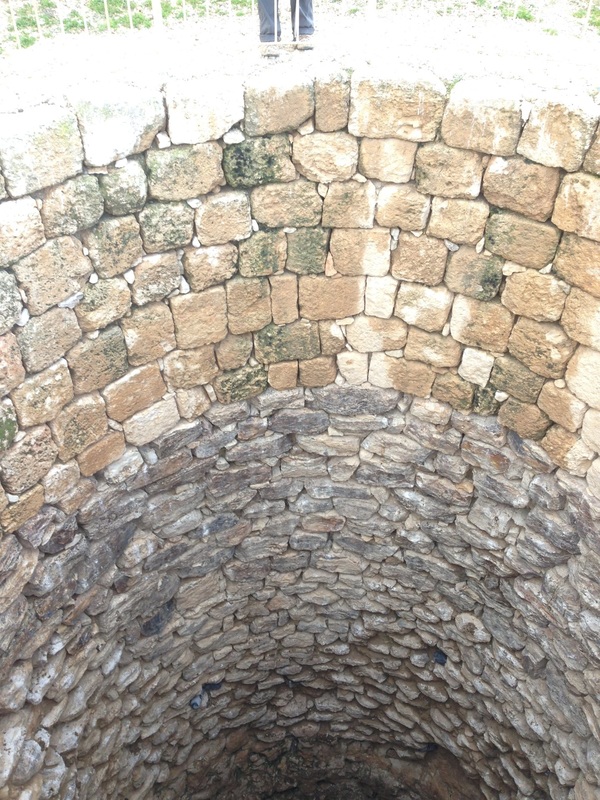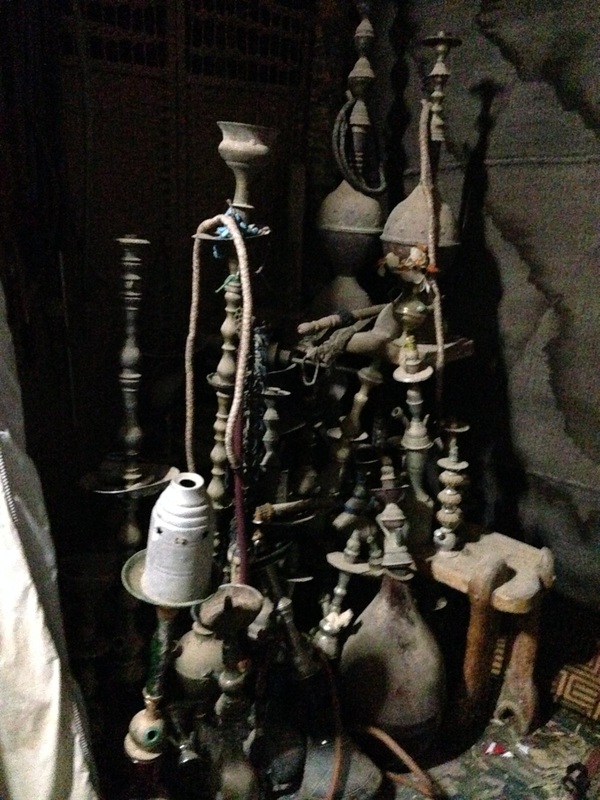Har Amasa to Arad
Section 31
|
We had an early start, driving to Kibbutz Amasa, where we left our car inside the gate. It was chilly morning. Thick mud stuck to our boots, a testament to the intense rain that had fallen a few days before. We actually started walking in the wrong direction, thanks to the shvil signs that were incorrectly painted. We fixed our mistake then walked southbound and uphill where there was a fascinating look out point. This marked the second highest part of the trail (Har Meiron is the highest point of the trail) and serves as a delineation between forest and desert. The demarcation was stark: on one side, forested hills and farming communities; yet to our south was the wild, wide and rocky Judean Desert sprawling before us.
The villages sprawled. Children played barefoot. Why were they not in school? Black veiled women hung out clothes to dry in the chilly air, and chickens pecked listlessly at pebbles. Garbage was dumped everywhere, littering the land with plastic bottles, boxes of diapers and waste. Most villages were off the grid, yet all homes had solar panels outside, searching out sunshine.
We left the Bedouin towns behind and walked into a flat, bleak desert. Soon we reached the archeological park Tel Arad, an impressive site with a large fortress garrison that was built at the time of King David and used until the defeat by the Babylonians in 586 BCE. |
We literally walked into the desert along a gentle trail that wrapped the side of rocky slopes. We saw a few Bedouin boys approaching, calling out to us. The taller boy pointed to me and yelled out a few words that I did not understand. We ignored his request and he picked up a rock. My heart pounded. The boys then followed us, yelling. We picked up the pace yet did not want to look nervous. I was very concerned given the situation here in Israel right now compounded with the fact that we were so isolated.
We approached a descent into a riverbed and as I looked back, they were gone. We breathed a sigh of relief and were once again able to focus on the scenery in front of us. At the bottom of the gulley, the terrain opened up to a flat expanse of desert with a smattering a Bedouin towns on the horizon. It was now overcast and chilly. Our boots squelched across the muddy desert, an oxymoron if ever there was. |
We made a hot coffee, had lunch and then toured the site. We spent some time looking around, a fascinating glimpse of desert life that dates back to 4000 BCE. There was a Bronze-age Canaanite settlement here until 2650 BCE. We peered down a deep cistern, the lifeline to a place in the midst of a barren desert.
Alone in these large ruins, we suddenly saw a fox wandering through the toppled walls and were reminded of Rabbi Akiva’s optimistic account of seeing a fox in the ruins of Jerusalem. Here we are, some 2,000 years later, freely walking a rebuilt Israel.
Alone in these large ruins, we suddenly saw a fox wandering through the toppled walls and were reminded of Rabbi Akiva’s optimistic account of seeing a fox in the ruins of Jerusalem. Here we are, some 2,000 years later, freely walking a rebuilt Israel.
|
We then walked across Highway 80 and along groves of almond trees, vineyards, olive trees and jojoba. The flat fields were perfect for farming and were a beautiful respite after hours of wandering over scattered rocks. We soon came to Park Arad and thought we would be entering the town of Arad, however the trail decided to keep us in nature, skirting the town by walking along a riverbed.
|
We saw a deer as the sun cast long shadows. Suddenly we saw a highrise apartment soaring off the desert floor. This was Arad, a modern city developed in the center of a desert. A crimson sun set behind the barren hills as we entered a world of hard asphalt and glaring streetlights. Urban life just seconds from the wilderness: carpools dropped kids home from school; people walked their dogs; billboards flashed outside the big mall. With muddied boots, walking poles and huge backpacks, we wandered the aisles of a grocery store. Not your average Arad shopper, we received some askance looks as we stood at the cheese counter. |
Our walk continued in the dark, another three kilometers to the home of Aryeh, a trail angel. He had a Bedouin tent set up in his backyard. We shared our bottle of wine with him and learned about his hospitality, hosting some 4,500 shvil walkers in the past six years. We told him our story about the Bedouin boys and he told us they were not a threat. We then bundled up with hats and gloves inside our sleeping bags. It was a cold desert night but we were so exhausted from the hike, we barely had time to think about discomfort.
Trail Facts: Distance 21 km, Climb 170m, Descend 500m. Moderate hike.
Wikiloc Map
Wikiloc Map






















